- Good Chop Review: Is It Really Worth It? - November 20, 2021
- Rastelli’s Meat Review: Is It Right For You? - October 5, 2021
- Farm Foods Market Review: Is It Worth Your Money? - August 20, 2021
Cooking with spices can be intimidating when you are first starting out. There are a lot of spices available and you may not even know what they all are. Plus, not all spices go together, and not all spices pair well with certain types of meat.
So, where do you start? I compiled this guide to meat seasoning and spices so you’d have a jumping-off point to experiment and find the seasonings and spices you like best with your favorite types of meat.
Why You Should Season Your Meat
To start, there are several reasons why seasoning meat is a good idea. For one, if you don’t season your meat, it can turn out really bland. Even though meat can be very flavorful on its own, the right seasons enhance it rather than detracting from it.
Add flavor and aroma
You can choose from a range of spices, giving it a kick of heat or just a hint of sweetness. They can also enhance the aroma of the meat, which plays a huge factor in how you enjoy the meal.
Enhance taste
Taste and smell go hand in hand, so adding just the right amount of spice can draw out the natural flavors of your meat and complement its taste.
Change or enhance color
Many exotic cuisines use spices to give their dishes a deeper color. This makes them look bright and appealing, which makes the entire meal more appetizing.
How to Purchase and Store Spices
There are several general rules you should follow when purchasing and storing your spices at home. You don’t have to follow them to the letter, but if you do, you’ll notice a big difference in how your meals taste.
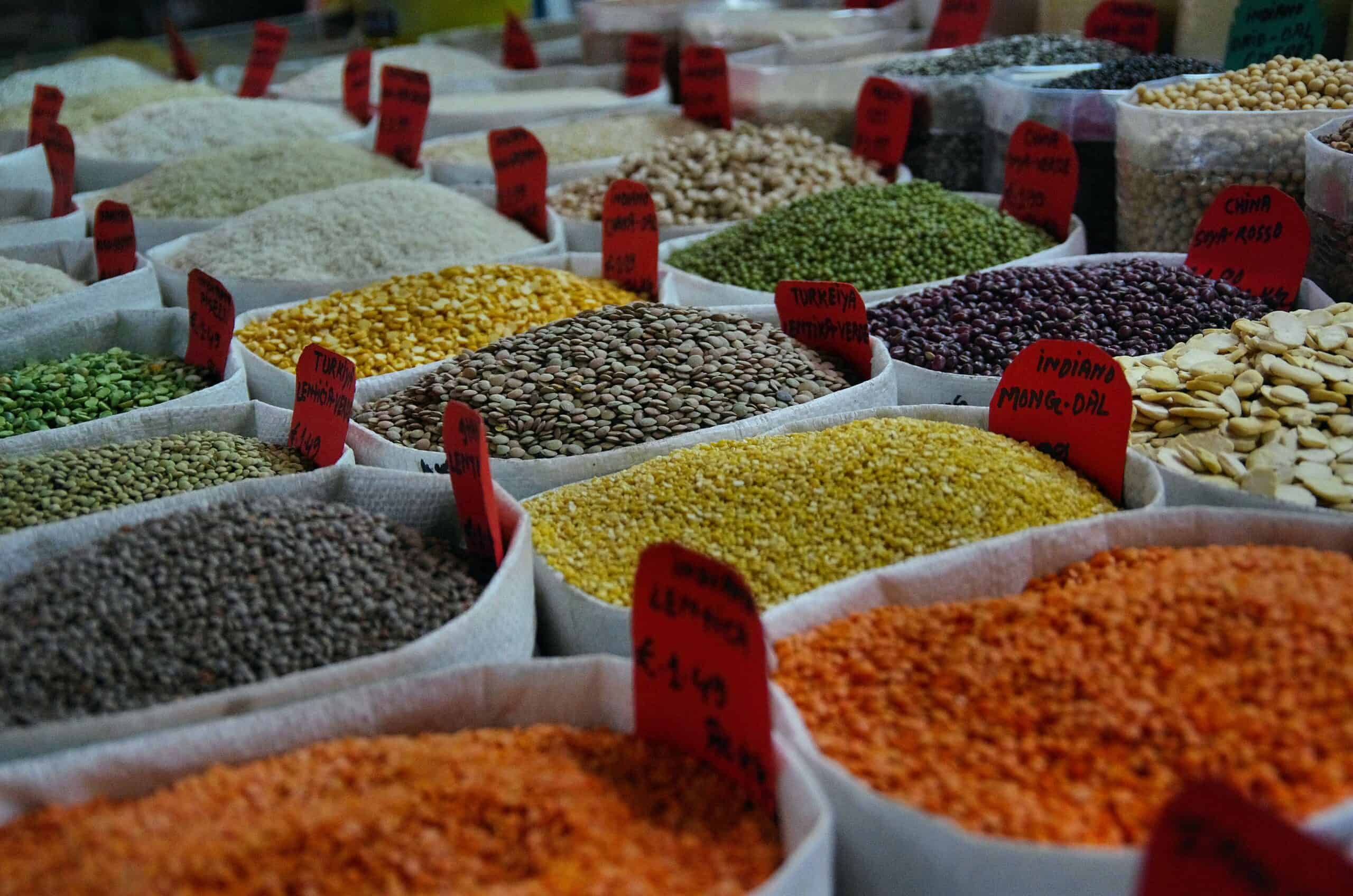
Buy whole spices
Your spices will last longer if you purchase whole versions rather than ground. However, you’ll need a grinder. You can even use a mortar and pestle or a coffee grinder. There are a few reasons why buying whole spices can make your food taste better.
Whole spices retain aromatic compounds a lot better before they’re ground, so grinding your spices fresh right before cooking deeply enhances the flavor of your food. There’s nothing wrong with having ground spices on hand for convenience, but buy them in small quantities so you’ll use them more quickly and you don’t have unused spices losing their flavor in your pantry.
If you want to tone down the flavor of your whole spices, toast them in a pan until they pop. When you can, use these fresh spices for intense flavor. You can even blend these spices in oil.
Store in a cool, dry place
Spices need to be stored away from heat and humidity. Keep them in a cool place away from moisture and sunlight. Don’t put your spice rack near the oven or a window that gets a lot of light. Heat and moisture affect the quality and flavor of your spices.
Before sprinkling spices on your food, pour it in your hand first. Shaking your jar above hot food will cake up the rest of the spices inside. Always replace the lid immediately after using it.
While some people store spices in clear jars so they can see the contents, it’s best to store them in opaque jars or tins in a dark cupboard. You can even store spices you don’t use very often in an airtight container in the freezer, bringing them to room temperature before opening.
Label your spices with purchase dates and smell them every few months to make sure they’re still pungent. Ground spices will oxidize faster than whole spices because they have a larger exposed surface area. They completely lose their flavor in 2-3 years while whole spices will last up to four years.
Throw older spices away
Spices don’t ever go bad in the sense that you can’t eat them, but they do lose flavor over time. If your spices look dull or have lost their original color, it’s time to toss them. The same goes for spices that don’t smell as intense as they used to. If you use them and they lack the flavor they once had, you can throw them away and get new ones.
Common Spices
While there is an endless number of different spices, there are a few very common spices that everyone should have in their pantry. These spices are versatile and can be used on a variety of different foods.
Allspice
Allspice is made from the dried berry of the Pimenta dioica tree. This tree is native to Central America and the West Indies and it’s a relative to clove, which is why it tastes a bit like cloves, nutmeg, and cinnamon.
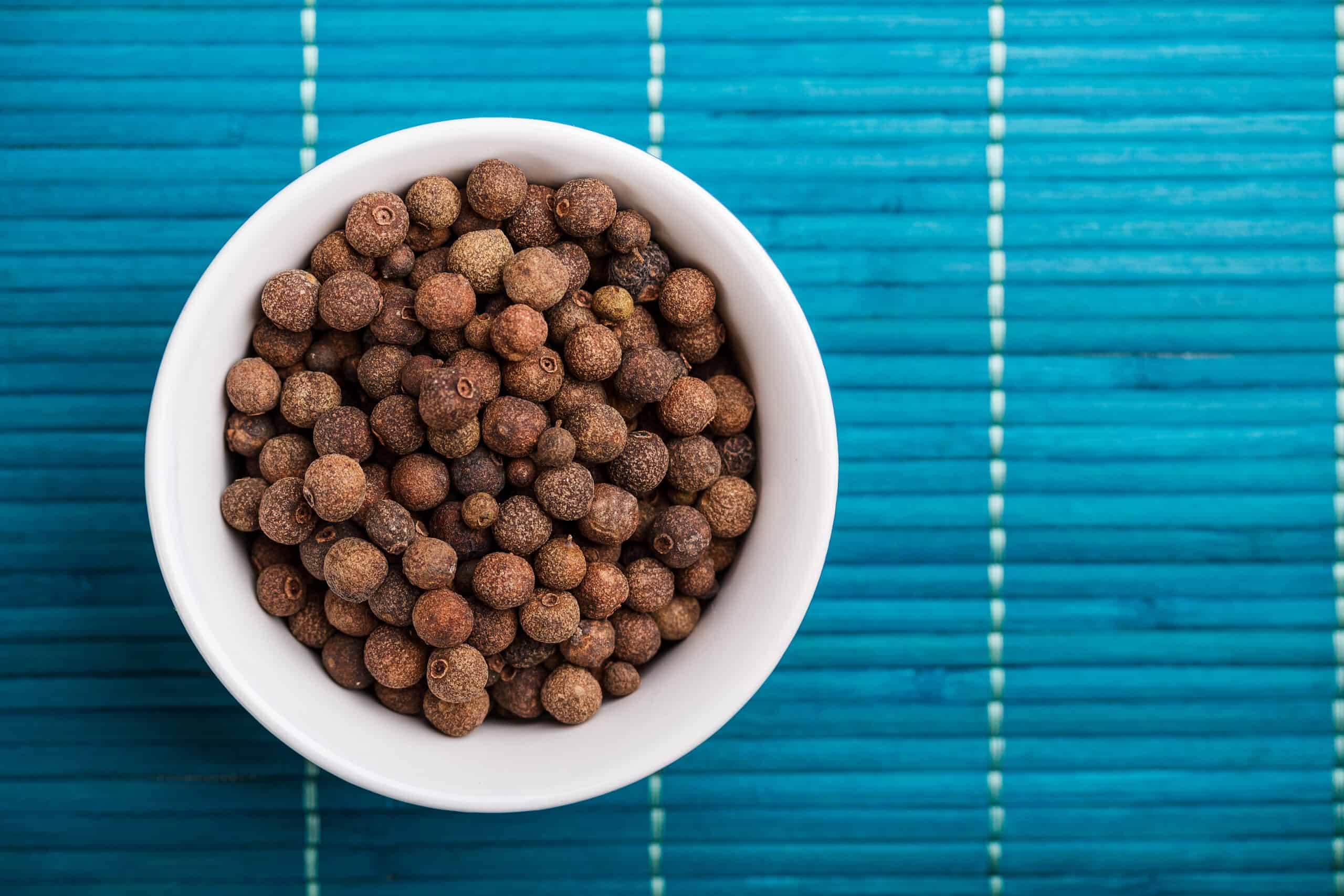
It’s recognized as the main component of Jamaican Jerk seasoning and Swedish meatballs. While it’s a common spice in North American baking, it’s primarily used in South America and Jamaica.
Allspice got its name in seventeenth-century Europe when people discovered that it tasted like a combination of so many other spices. In fact, Allspice is a common substitute for any of the other spices it tastes like. If you happen to be running low on cinnamon, nutmeg, or cloves, you can substitute an equal amount of allspice in your recipe.
Anise
Anise seeds come from the Pimpinella anisum, which is a flowering plant in the parsley family. These seeds are actually the ovoid fruit of the plant. The spice contains a high concentration of anethole, making it nearly 13 times sweeter than sugar.
Anise has a flavor similar to that of licorice, and it’s used to flavor drinks like ouzo and pastis. Greek meat dishes are often seasoned with it and it’s eaten as a candy-coated treat in the Netherlands and India, where they also use it to flavor milk.
This spice is also used in Southeast Asian food to add flavor to pork and poultry, it’s used for baking bread, and it’s an ingredient in hot mulled tea.
Anise is also commonly used in fragrances like perfume because it smells so sweet.
Cardamom
Elettaria cardamomum gives us the dried fruit we call cardamom, and it’s a member of the ginger family. It comes from southwest India and has a sweet, warm, fruity, and floral flavor that Nordic countries use to bake goods. It’s also found in Arabic coffee, sweet puddings, and rice dishes.
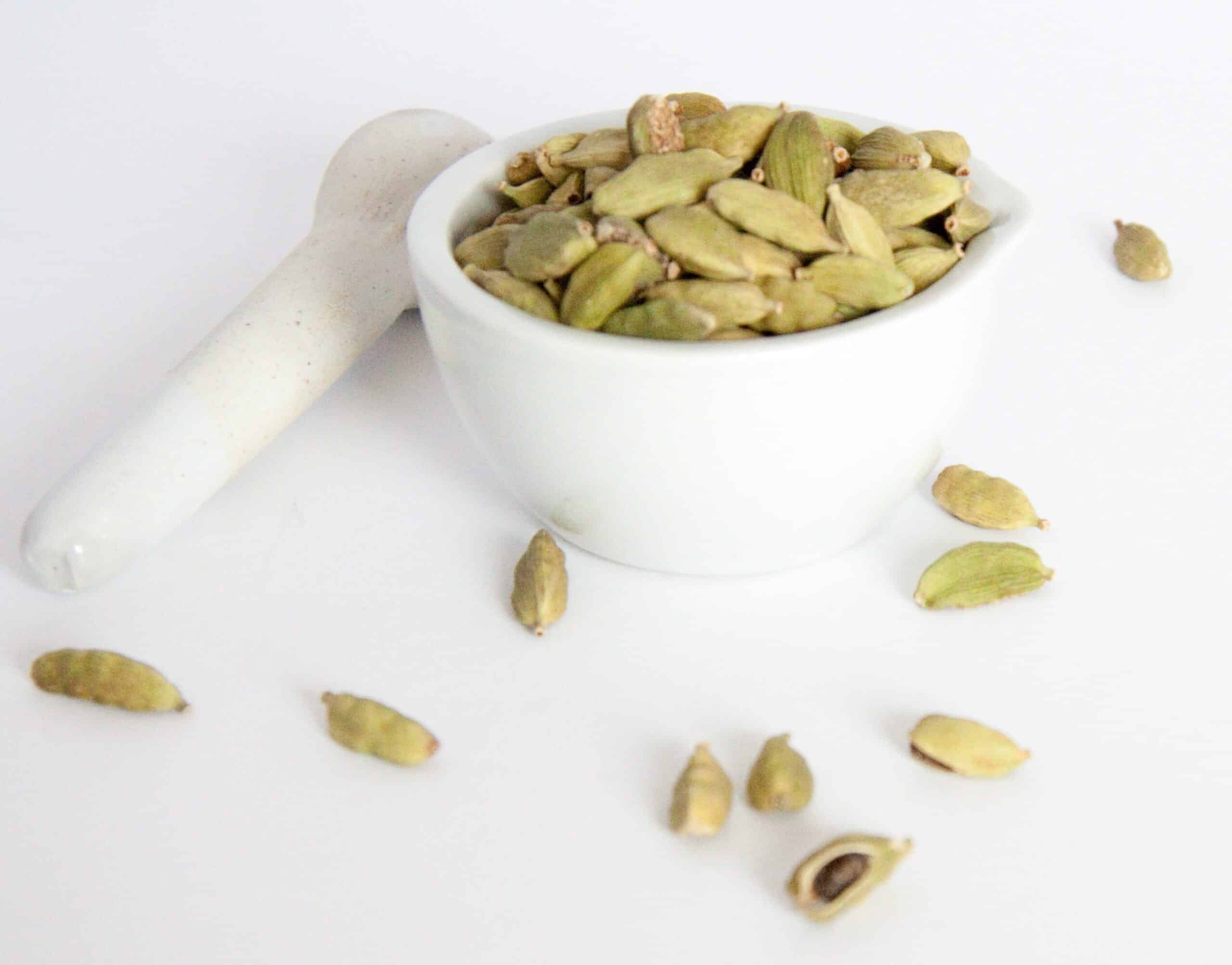
Because it’s closely related to ginger, it can be substituted easily, although they’re not quite the same.
The two main varieties of cardamom are Mysore and Malabar. Mysore is larger than Malabar, green in color, and smells a bit like eucalyptus. Malabar is smaller, has a stronger floral fragrance, and is often bleached.
Black cardamom
Black cardamom, or large cardamom, is often mistaken for cardamom, but it comes from a totally different plant called the Amomum subulatum that grows in the eastern Himalayas. This spice comes from a long red pod with flavors of camphor and cineole. The flavor can be further enhanced by smoking and is found in dishes like the Vietnamese pho.
Caraway
Caraway comes from the Carum carvi plant, which is also a member of the parsley family. It was one of the first spices the Europeans cultivated and it’s still used in pork, sauerkraut, and potato dishes. It has a warm, anise-like flavor that also comes from anethole.
It also has hints of rye due to its carvone content, also found in dill. Its limonene component also makes it taste a bit like citrus.
Cayenne is sometimes also referred to as red pepper. It has an intense spicy flavor because it’s made from tropical chilies. There are more than 200 varieties of cayenne, so it’s a common seasoning in almost every cuisine.
This spice is used in Asian, South American, Mexican, Indian, Chinese, Cajun, and African cooking. You can use it to add a bit of heat to tacos, chili, stir fry, or nearly any other dish.
Cinnamon
This spice comes from the inner bark of the Cinnamomum tree, called the phloem layer. This is a tropical tree found in India, Sri Lanka, Bangladesh, and Myanmar. In its whole form, cinnamon looks like a rolled quill or stick but is ground into a fine powder before use.
Cinnamon has several aromatic compounds, but the one most familiar to us is cinnamaldehyde, which is what gives it a bit of spice. There are several different species of Cinnamomum used in cooking.
- Cinnamomum cassia is what we find in the United States and it’s also the most popular variety of cinnamon in East Asia. It comes in thick, dark, coarse quills that have a double-spiral shape. It has a bittersweet spicy flavor and is used in Chinese five-spice powder.
- Cinnamomum Verum goes by several other names including Cinnamomum zeylanicum or Ceylon. This variety has smooth, brittle quills with a single spiral shape. It’s tan on the outside and dark red or brown on the inside. The flavor is more delicate with less cinnamaldehyde and more floral notes. This cinnamon is delicious in Mexican dishes like carnitas or Arroz con Leche.
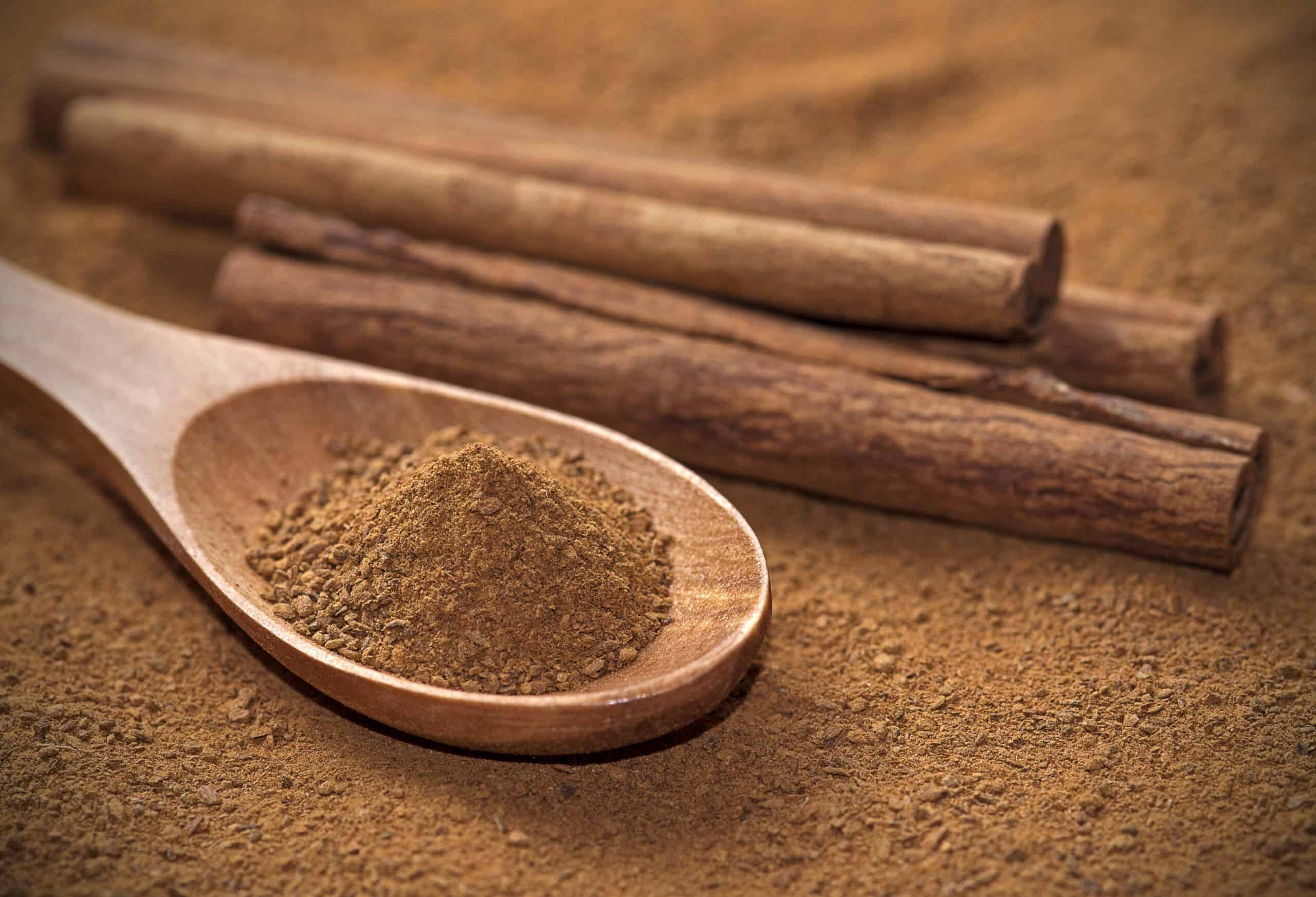
Cinnamon goes very well with sugar and a cinnamon: sugar ratio of 1:3 can be used on toast or as a rub for savory meat dishes like Moroccan tagines.
Cloves
Cloves have been used in Chinese cooking for thousands of years and they’ve been in use in Europe since the Middle Ages. They come from the immature dried flower buds of the Syzygium aromaticum tree, which is native to Indonesia.
Cloves contain 14-20% essential oil content, so of any other spice, they have the highest concentration of aroma compounds. The flavor you recognize comes from antimicrobial eugenol, making cloves a popular ingredient in medicine.
Add cloves to roasted ham, smoked meats, mulled wine, sauces, pickles, curries, or an apple crumble dessert, but go easy, because they can easily overpower the other flavors. You can add them whole and remove them from the final dish or you can grind them and add them in.
Coriander
Coriander comes from the same plant as cilantro. Whereas cilantro is the leaf, coriander seeds are the small fruits that appear after the herb flowers. You can harvest them while they’re green or leave them to brown and dry out.
Fresh green coriander goes great on a salad because of its bright flavor. The dried brown pods are what is often found on spice racks in the kitchen and it has a floral citrus flavor that is used in Indian cuisine or Moroccan tagines.
Paired with cumin, coriander works well to season homemade burgers or to poach liquor for fish.
Cumin
Cumin has a warm nutty flavor that comes from the Cuminum cyminum, which is native to Southwest Asia. These seeds look and taste similar to caraway, and it’s a common substitute because it’s easier to find in stores than caraway.
The main flavor compound in cumin is cumaldehyde, which is also found in eucalyptus. Cumin is popular in Mediterranian, Asian, and Middle Eastern cooking, but it’s also a great way to season skirt steak for carne asada tacos. Toast cumin and grind it to make an excellent finishing salt for grilled meats.
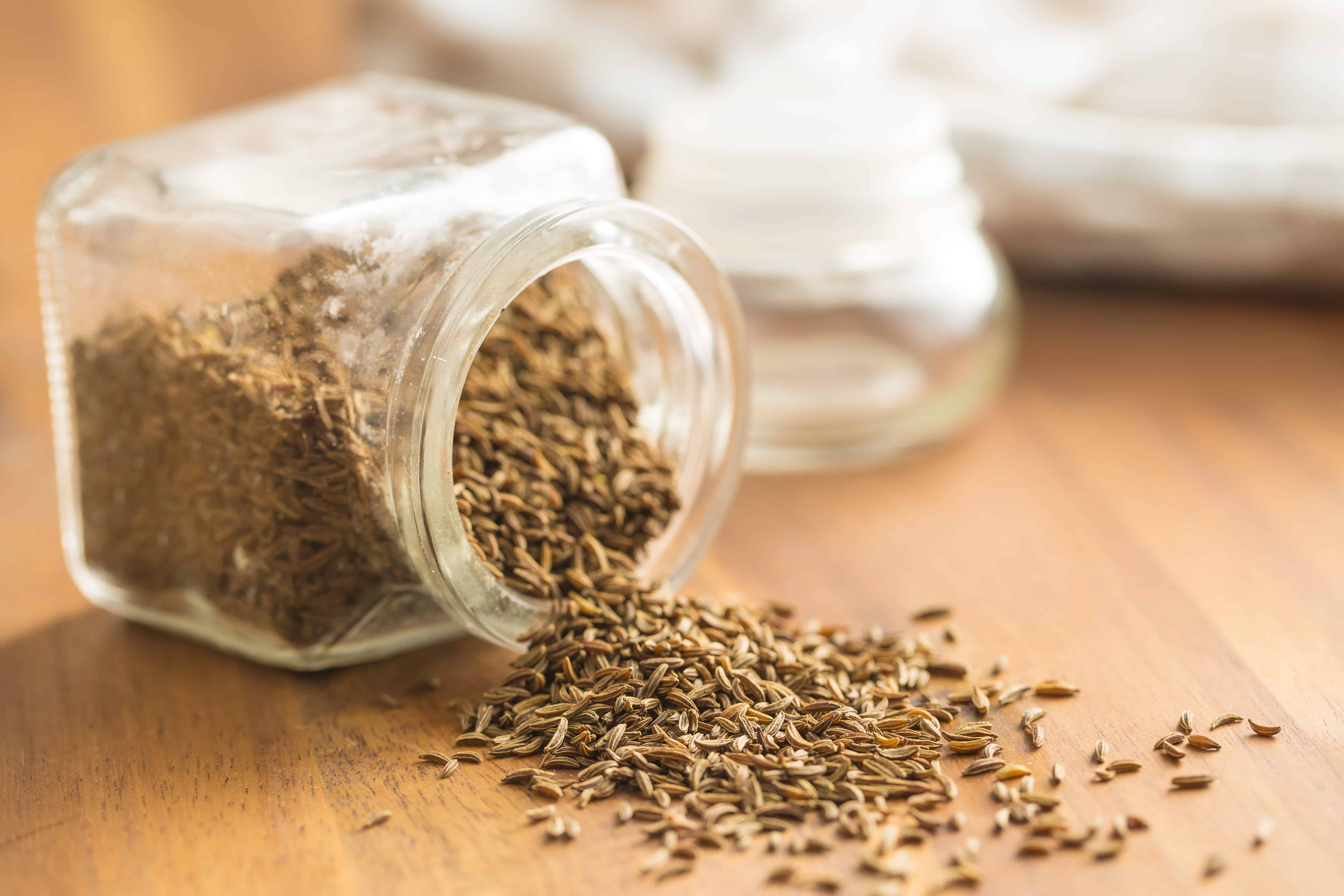
Fennel
These seeds are the dried fruit of the fennel plant. The bulb of this plant can also be eaten as a vegetable. There’s a strong anise flavor with bitter, fresh, pine, and floral notes. While the plant is native to the Mediterranean, it also grows very well in some parts of the United States.
Fennel is an essential seasoning in Italian sausage and also pairs well with pork dishes. It has a sweet, mild licorice flavor that complements other meat like fish and meatballs. It can also be used to make sauces.
Ginger
Ginger is made of the underground stem (called the rhizome) of the Zingiber officinale plant. This tropical plant comes from the same family as turmeric and cardamom. Ginger gets its sharp bite from the aromatic compound gingerol. When heated and dried, this compound is sweeter and less pungent than fresh ginger.
Fresh ginger is common in stir fry dishes and other Asian cuisines. Ground ginger is used in gingerbread, pumpkin pie, spiced cookies, and gingersnaps.
Nutmeg
Myristica fragrans produce plum-like fruits. When they ripen, they split open to reveal a seed covered in a shell and surrounded by a red outer layer called an aril. The aril is removed and dried to produce mace, which is another seasoning. The seed inside the shell is the nutmeg.
Nutmeg contains the aromatic compounds sabinene, pinene, myristicin, and methyl eugenol, which are the same that is found in mace. However, nutmeg also contains limonene, geraniol, cineole, and safrole. This combination of compounds gives nutmeg its woody, sweet, floral, and citrusy flavor.
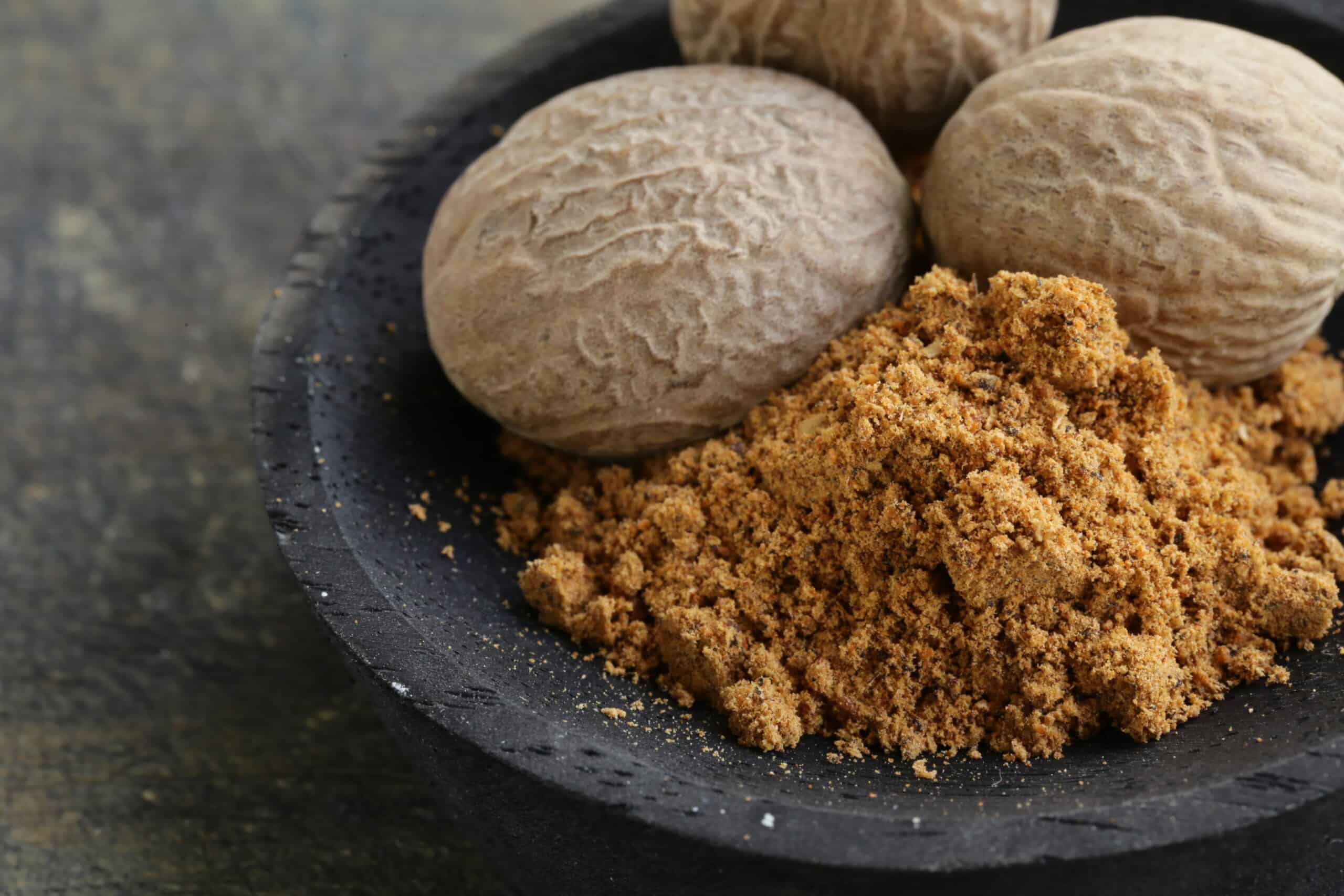
Nutmeg and mace are both commonly used to spice eggnog, but nutmeg can be used to make sauces and marinades for meat or vegetables.
Paprika
Paprika ranges from mild to hot, depending on the variety of pepper used to make it. It’s made from orange and red peppers that have been dried and ground. Paprika is common in Hungarian, Spanish, and South American cooking and works well with roasted meats and poultry dishes.
Peppercorns
Fresh ground peppercorns are commonly used to season meats of all kinds for grilling, searing, or roasting. Unlike other spices, pepper mills are so easy to find and use that there’s no reason to ever buy pre-ground pepper.
Peppercorns typically come already roasted, but for a more intense flavor, you can toast them in the oven again before grinding them. There are several different kinds of peppercorns, and they are all different.
- Black, green, and white pepper are all made from the fruit of the black pepper vine. Black peppercorns have the strongest flavor. You can find the more immature green peppercorns dried or brined. White peppercorns are black peppercorns with the outer husks removed and are primarily used for aesthetic purposes.
- Szechuan peppercorns are from a type of prickly ash and are a different pepper altogether. They have a lemony flavor that works well in Szechuan dishes but can be toasted for a more woody flavor.
- Japanese sansho is from the same plant as the Szechuan peppercorn, but tastes more like citrus and is rarely toasted.
- Pink peppercorns are from the Brazillian pepper tree. They have sweet citrus and fresh pine flavor that is often used in desserts.
Turmeric
Like ginger, turmeric is harvested from the underground stem of a plant. This plant, called the Curcuma longa, is a relative of ginger and has a bright yellow or orange color. The earthy flavor and color are familiar to us because it’s found in mustard.
Turmeric is a common seasoning in Caribbean and Indian cuisines not only because of its flavor, but because it makes the dishes bright and colorful.
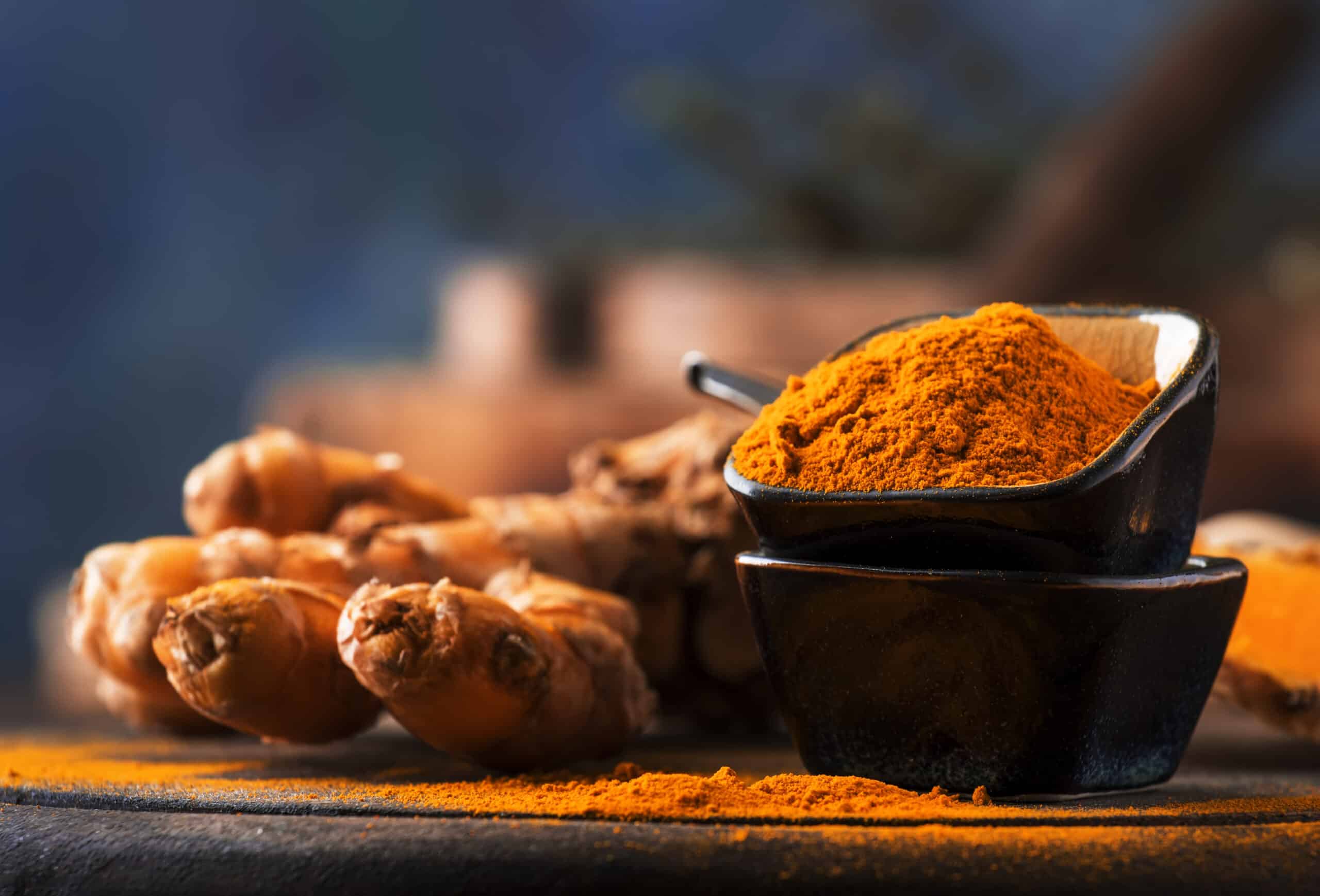
Spice mixes
Mixing your own spices is a great way to add a familiar flavor to a dish without playing the guessing game while you’re standing in the kitchen. Keep these combinations handy the next time you want to make a specific type of cuisine.
- Moroccan ras el hangout: This African spice combination includes fenugreek, cardamom, chili powder, cinnamon, cloves, coriander, cumin, and mace.
- Jamaican jerk: This American mix includes allspice, black pepper, cayenne, garlic, ginger, nutmeg, paprika, salt, sugar, and thyme.
- Cajun blackened seasoning: Make your favorite creole dishes by combining bay leaves, black pepper, cayenne, caraway, celery seed, crushed red pepper, cumin, garlic, mustard powder, onion, dried oregano, paprika, and thyme.
- Chinese five-spice: This Chinese spice recipe includes equal parts anise, cinnamon, cloves, fennel, and black pepper.
- Herbes de Provence: This French mix is a savory mix of basil, chervil, fennel, lavender, dried marjoram, rosemary, savory, tarragon, and thyme.
- Garam masala: Common in Indian dishes, this mix of spices includes black pepper, cardamom, cinnamon, clove, coriander, cumin, and mace.
- Za’atar: For a fantastic Middle Eastern spice mix, combine marjoram, oregano, sesame, sumac, and thyme.
Spice and Meat Pairings
While you can use any of the spices already mentioned, some spices go well with certain types of meat.
Beef
Beef has a strong flavor on its own, so it’s important to use spices that stand out rather than fading into the background. They need to have their own strong flavor and complement the beef without being overwhelmed.
There are also so many different kinds of beef that you’ll want to consider the type of beef you’re using and what dish you’re making before deciding which seasonings to use. Spices that go well with beef include:
- Black pepper
- Basil
- Cayenne
- Ghost chili powder
- Garlic
- Mustard powder
- Onion
- Oregano
- Sage
- Thyme
You can combine any of these for the exact flavor profile you want or add in a few less pungent spices along with them. Salt always makes a great pairing because it brings out the natural flavor of the meat and makes it juicier.

While veal is technically beef, it has a more delicate flavor than mature beef so the seasonings you use will be more delicate as well. They include:
- Lemon peel
- Marjoram
- Parsley
- White pepper
Pork
Pork is unique because it doesn’t have an overpowering flavor like beef does, but it’s not as bland as chicken. It can be sweet or savory depending on how you cook it. While there is some overlap in spices you can use with both beef and pork, there are certain spices that are better suited for a pairing with pork. They include:
- Allspice
- Caraway
- Cinnamon
- Garlic
- Ginger
- Juniper berries
- Mustard
- Sage
Chicken
Chicken is mild in flavor, which gives you a blank slate when seasoning it. There are so many spices that go well with chicken that you can hardly go wrong with anything you want to use. Think of the rest of your meal and season the chicken to pair well with side dishes rather than simply thinking about seasoning the meat.
Here are a few great seasoning options for chicken:
- Bay leaf
- Cilantro
- Cinnamon
- Dill weed
- Garlic
- Lemon peel
- Lime peel
- Mace
- Orange peel
- Paprika
- Rosemary
- Savory
- Tarragon
Venison
This gamey meat pairs better with herbs than spices because herbs do a better job of bringing out the unique flavors of the meat and will mask the gamey qualities. You can use spices, as long as it’s in combination with an herb. Here are some great herbs to use:
- Bay leaf
- Green peppercorns
- Juniper berries
- Sage
- Savory
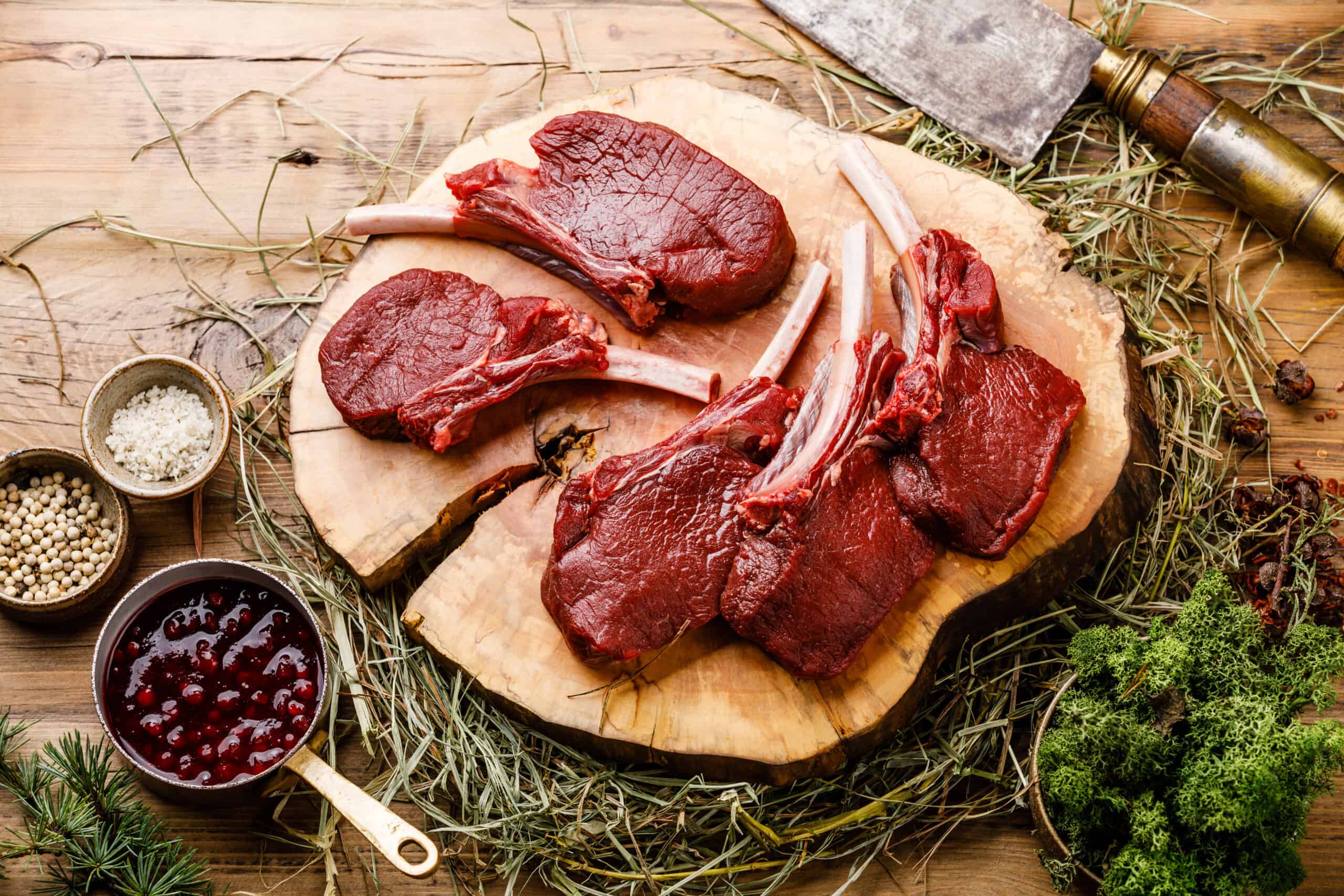
Mutton
This mature sheep meat is popular in India, so Indian spices are common. It can be rich and succulent or even crisp and refreshing when paired with any of the following herbs and spices:
- Coriander
- Cumin
- Dill weed
- Garlic
- Mint
- Rosemary
- Thyme
- Turmeric
Any of these will also work well with lamb, but because lamb is lighter and more delicate, use them in smaller portions so you don’t overwhelm the meat.
Fish and seafood
This category encompasses a wide variety of meats, so it depends on the fish, but herbs and spices will give fish and seafood a lot of flavors. Here are just a few ideas:
- Anise
- Basil
- Black pepper
- Cinnamon
- Coriander
- Lemongrass
- Lemon pepper
- Mint
- Oregano
- Sage
- Tarragon
Turkey
When you think about making turkey, you likely think of cooking the whole bird for Thanksgiving. However, there are a variety of spices that you can use when making ground turkey dishes or turkey burgers. They include:
- Anise
- Black pepper
- Cumin
- Paprika
- Red pepper flakes
- Rosemary
- Sage
- Thyme
Goose and duck
Like venison, goose and duck are very gamey, but they’re also very fatty. It’s harder to compliment meats like goose and duck, but because these are typically thought of as holiday meats, you can use a variety of holiday flavors like:
- Clove
- Fennel
- Lemon peel
- Orange peel
- Rosemary
- Sage
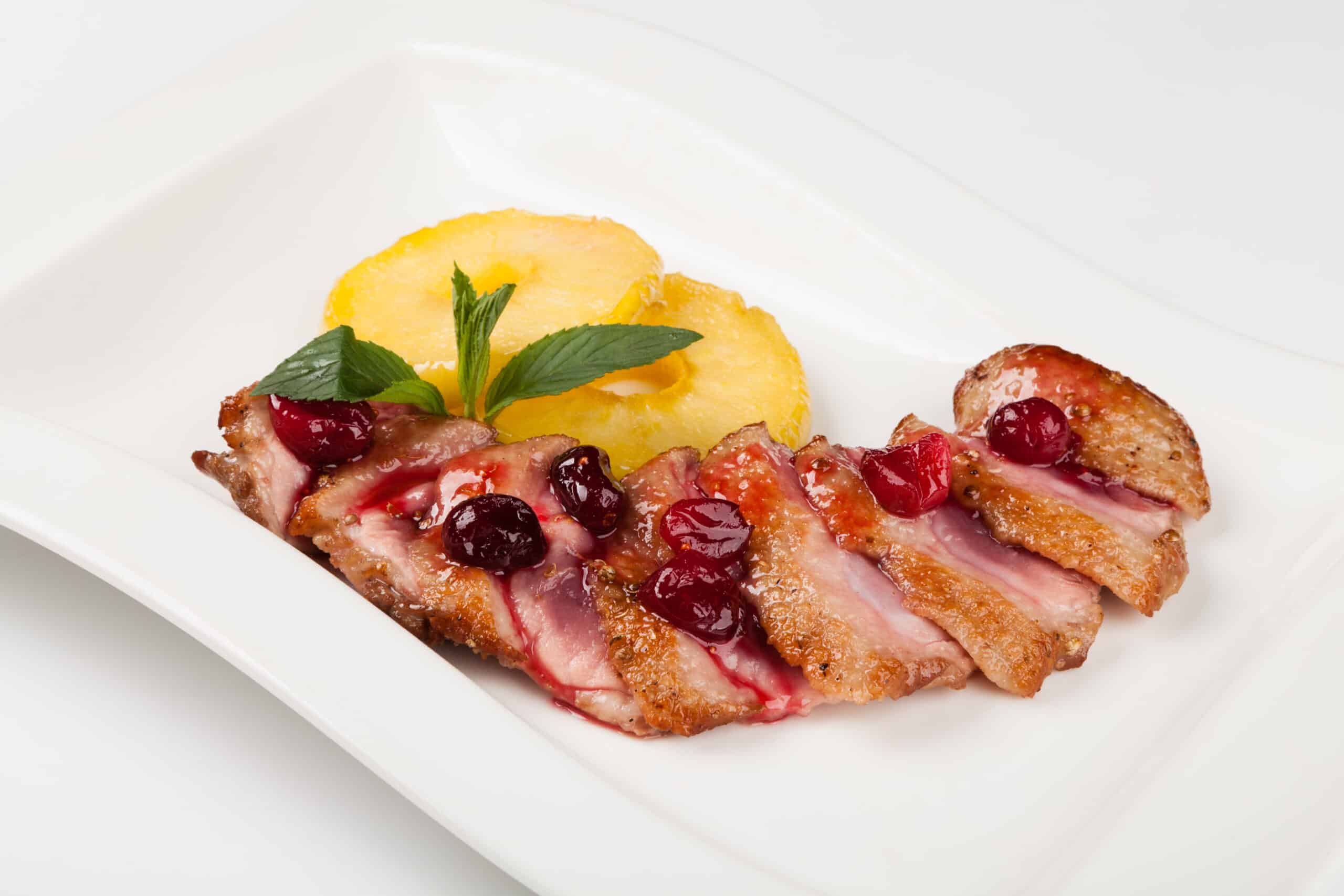
FAQ
A lot of your meat seasonings and spices will depend on your personal preference, and sometimes it takes some experimenting. Here are some frequently asked questions that may give you some more ideas.
Question: What are the 4 basic types of seasoning ingredients?
Answer: It might help to think about seasonings in four different groups. These groups are salt, pepper, sweeteners, and acids. When you season your food, you’re adding just enough of these ingredients to complement the food, but not change the taste entirely.
If you’re mixing ingredients, try one seasoning from each of these groups, and mix and match until you find what you like.
Question: Should I refrigerate spice mix?
Answer: Any spice, whether you’re mixing it yourself or buying it from the store, should be kept in a cool dry place. A refrigerator is a great place for it, but most people don’t have dedicated space in their fridge for that many spices.
While you can store them in the fridge, the back of a pantry is fine, too. Just make sure they’re far away from the stove and oven because heat can damage them.
Question: What can I do with old spices?
Answer: Rather than throwing out spices that seem to have lost their aroma, you can make potpourri. Because heat helps release the aroma, boiling a pot of water and adding your spices to it make your entire home smell good.
You can also use them in homemade soap and the granular bits of spice that are still intact will help exfoliate your skin.
Final Thoughts
While there are many different seasoning suggestions, there is an endless number of herbs and seasonings out there, and everyone has a personal preference. The best way to figure out what you like is to try some of these suggestions and then tailor them to your tastes.
There’s no wrong way to season meat, so don’t let this list intimidate you. These are just some of the common seasonings found on the shelf, but they’re not going to be right for everyone. The more you cook, the easier it will be to find what you like.
Further Read:
